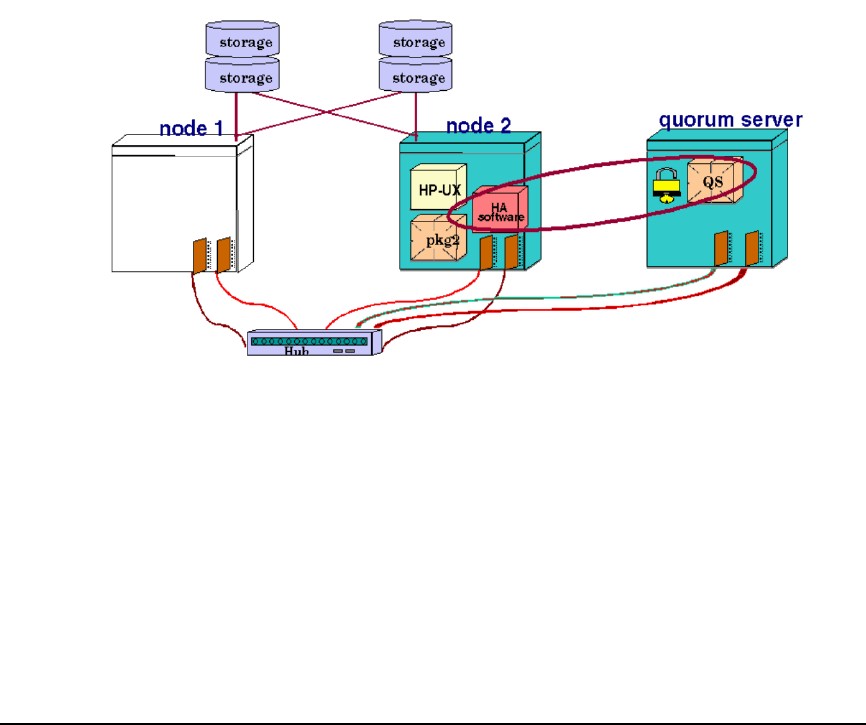Managing Serviceguard 11th Edition, Version A.11.16, Second Printing June 2004

Understanding Serviceguard Software Components
How the Cluster Manager Works
Chapter 3 69
lock, this area is marked so that other nodes will recognize the lock as
“taken.” If communications are lost between two equal-sized groups of
nodes, the group that obtains the lock from the Quorum Server will take
over the cluster and the other nodes will perform a TOC. Without a
cluster lock, a failure of either group of nodes will cause the other group,
and therefore the cluster, to halt. Note also that if the quorum server is
not available during an attempt to access it, the cluster will halt.
The operation of the quorum server is shown in Figure 3-3. When there
is a loss of communication between node 1 and node 2, the quorum server
chooses one node (in this example, node 2) to continue running in the
cluster. The other node halts.
Figure 3-3 Quorum Server Operation
The quorum server runs on a separate system, and can provide quorum
services for multiple clusters.
No Cluster Lock
Normally, you should not configure a cluster of three or fewer nodes
without a cluster lock. In two-node clusters, a cluster lock is required.
You may consider using no cluster lock with configurations of three or
more nodes, although the decision should be affected by the fact that any
cluster may require tie-breaking. For example, if one node in a
three-node cluster is removed for maintenance, the cluster reforms as a
two-node cluster. If a tie-breaking scenario later occurs due to a node or
communication failure, the entire cluster will become unavailable.










